If your car is burning oil, it’s probably wearing out. Over time, the piston rings have likely become worn or stuck in their grooves, preventing them from sealing tightly against the cylinder wall.
The tiny gap that has formed between the ring and cylinder wall allows oil to enter the combustion chamber and burn. Worn valve seals produce the same effect. You may also be using an oil with poor resistance to heat, causing the oil to evaporate.
Let’s take a closer look at what might be happening.
A car burning oil can be due to a few reasons:
• Worn or stuck piston rings
• Worn valve seals
• Unstable motor oil
• Excessively low oil viscosity
Reasons for engine oil consumption
Most stock automotive pistons contain three rings.
The top and second rings are responsible for pressing tightly against the cylinder wall and sealing the combustion chamber, keeping combustion gases in and oil out.
The oil ring scrapes oil off the cylinder wall on the way down the cylinder, depositing it back into the oil sump.
Because an extremely thin film of oil lubricates the ring/cylinder wall interface, it is normal for some oil to burn during combustion. What constitutes “normal” oil consumption, however, depends on the engine.
Check out this post to learn more about the role of automotive piston rings.
Bad valve seals can cause a car to burn oil
Valve seals also help prevent oil from entering the combustion chamber.
Because oil is present to lubricate the seals and keep them pliable, some oil will burn during combustion, leading to engine oil consumption.
Even so, newer engines shouldn’t burn much oil. In fact, you shouldn’t need to add much – if any – top-off oil between oil changes, particularly if you’re using a high-quality synthetic oil. But be sure to check your oil regularly just in case.
Blame it on friction
Despite our best efforts, things eventually wear out, including engines.
Worn rings can allow a gap to form between the ring face and cylinder wall. During operation, oil can slip past the rings into the combustion chamber, where it burns. Worn valve seals also contribute to oil consumption.
Stuck rings as a result of heavy deposits can result in the same scenario.
Using a conventional oil that fails to resist chemical breakdown can lead to ring-land deposits, which cause the rings to stick. When this happens, the piston rings no longer float in the cylinder liner and can lead to increased engine oil consumption (in addition to wear).
Low-quality oil can cause oil consumption
You may also be using a motor oil with poor heat resistance.
Conventional motor oils contain light, unstable molecules that more easily lift out of the solution in the presence of high heat, much like the heat of the sun lifts water molecules out of a puddle.
As a result, the oil level drops as the oil is converted to carbon deposits throughout your engine.
This is likely what happened with my Oldsmobile Intrigue back in the dark ages before I started working at AMSOIL. I used a cheap oil from a big-box retailer, and scratched my head in befuddlement each time the oil on the dipstick registered low. I even had a mechanic check for oil leaks (he found none).
Incorrect oil viscosity can be to blame
Another possibility, albeit less likely, is you’re not using the correct viscosity of motor oil for your engine.
Viscosity is defined as resistance to flow, but it’s easier to think of it as thickness. The lower the viscosity, the thinner the oil. As you can imagine, thinner oil will slip past worn rings or valve seals easier than thicker oil.
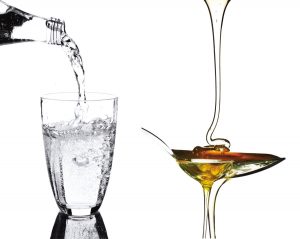
The correct oil viscosity for your engine is probably printed on the oil filler cap. If not, you can find it in the owner’s manual or the AMSOIL Product Guide.
Some manufacturers recommend a range of viscosities depending on your climate (e.g. 5W-20 when it’s cold, 10W-30 when it’s above 0ºF [-18°C]).
Using the highest recommended viscosity can help close the gap between the rings and cylinder wall, reducing oil consumption.
Fight engine oil consumption with an oil that fights wear and deposits
The best way to prevent oil consumption is to use a high-quality synthetic oil that offers excellent wear protection and deposit resistance.
Over time, the oil helps ensure the piston rings don’t wear out so they continue to form a tight seal against the cylinder wall. It’ll also fight deposits that lead to ring sticking better than conventional oils.
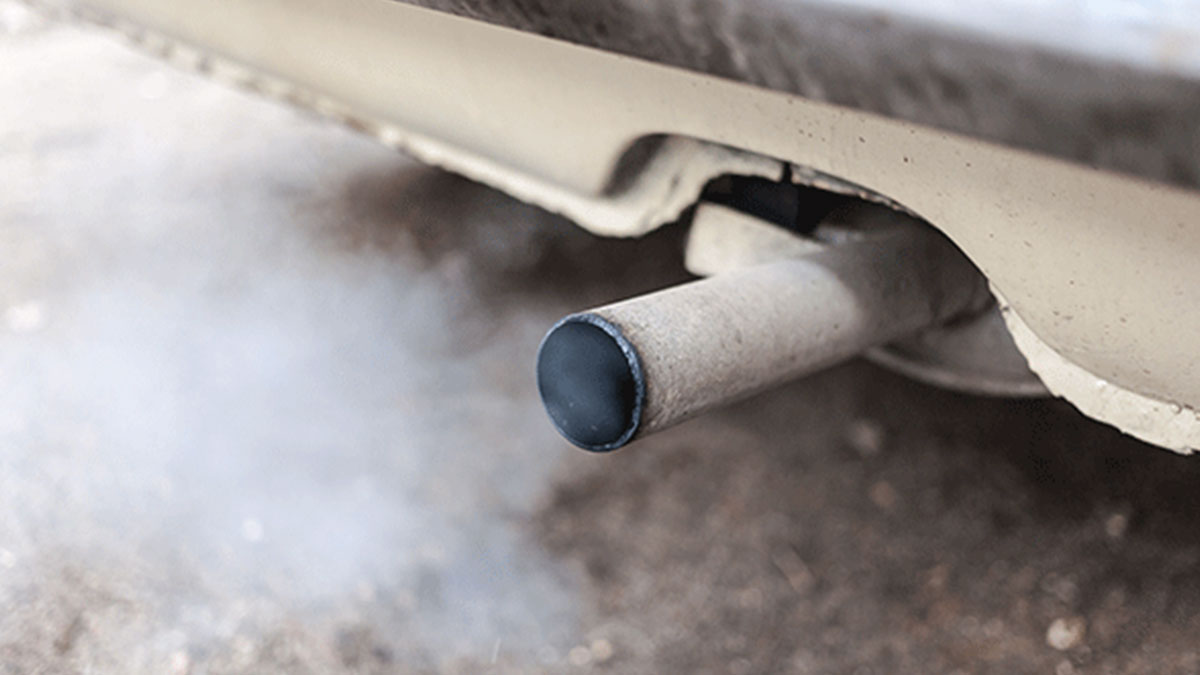

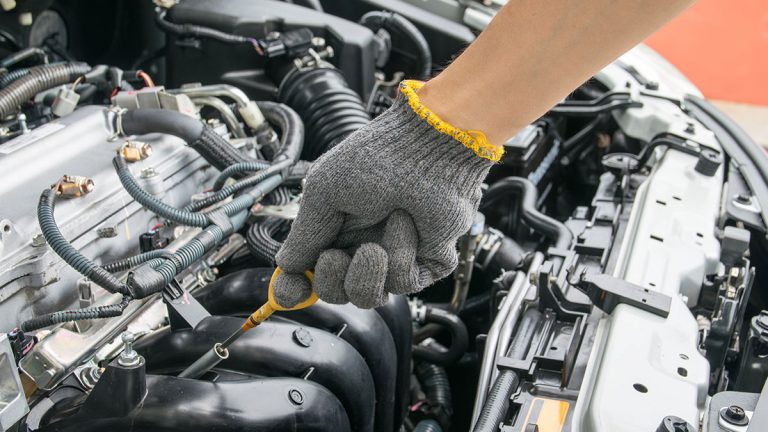
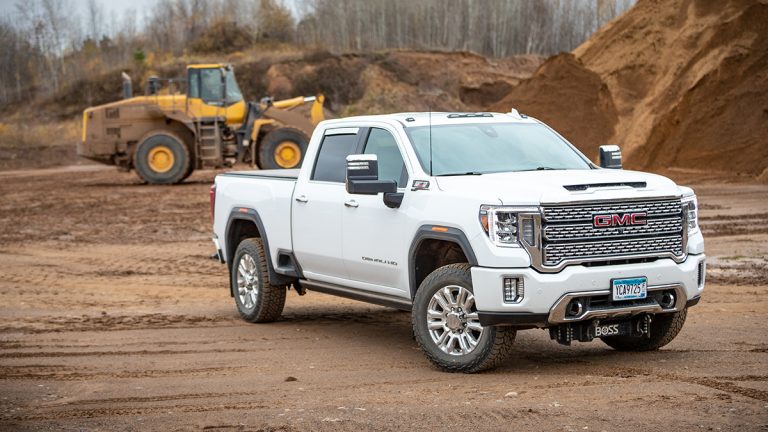

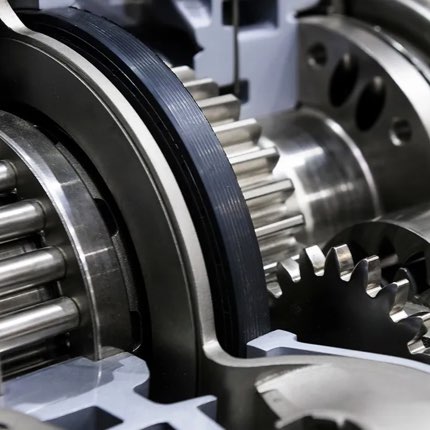
Many people say it’s normal for modern engines to use oil due to low tension piston rings.
I say any measurable amount of oil consumption with modern engines may be called “normal” by the manufacturer but is a sign of a problem and while catastrophic failure may not be imminent, it is a sign of poor engine health or improper oil viscosity.
Is my statement too absolute or spot on?
Hi Jeff,
Too absolute. All engines will consume some oil, but the amount considered “normal” varies from engine builder to engine builder. As long as the amount of oil consumption falls within the OEM limits, there shouldn’t be a problem.
Thanks,
John
Due to wear, car consume more engine oil as they get age. Burning oil is a common problem, ignorance can lead to major damage to your car’s engine. Piston rings, worn valves stems, guides and seals are the main culprits that results burning of engine’s oil. These all components can allow oil to seep into combustion chambers. If engine oil gets in the combustion chamber it will burn, possibly in amounts small enough not to produce blue smoke in the exhaust, but enough to notice when you check the car’s dipstick.
I’ve found that over the last ten or fifteen years, the PCV systems on cars have become easier and easier to neglect. Unlike the cars I grew up driving where the PCV “system” was easy to service and hard to forget, newer cars conceal the fresh air inlet and vapor extraction outlet within valve covers and intake manifolds already frequently masked by plastic shields and cosmetic covers. Being out of sight frequently also means out of mind, and some simple but critical features of these engines eventually fail due to simple neglect.
A recent example in my own family is a 2006 Odyssey van with 170k miles. Great van, has had AMSOIL fluids and filters since purchased lightly used in 2008. I noticed during the last couple oil changes that the oil drained was a bit less than expected, and the noticable odor of gasoline. Over the past few months, it developed oil leaks at the oil filter adapter and valve cover gaskets. I replaced the gaskets, finding them damaged by “seal swell” and reeking of gasoline. The forward valve cover also happens to house the PCV valve (hidden, very clever design) which was gacked up with what could best be described as sludge. The forward valve cover was coated in sludge but the rear valve cover and all of the engine parts were clean. The oil was doing its job to control the formation and deposit of sludge, but was no match for a failed crankcase ventilation system. The forward cover is the coolest part of the engine due to its proximity to cooling airflow, and the plugged PCV valve prevented the removal of gasoline and water vapor, leading to the formation of sludge.
With the PCV valve fouled and stuck shut, the depression from the intake after the throttle body is no longer able to clear the crankcase of blowby vapors or water. It also means that the lowest PRESSURE within the engine is on the combustion chamber side of the piston rings. This adds to the likelihood of oil consumption because it causes crankcase pressure to be relieved past the part of the engine constantly wetted by engine oil, instead of through the baffled PCV system on top, far removed from slinging oil.
This is also the case with many other engines, where the owner (and frankly, most mechanics) are oblivious to the PCV system and its role in keeping the engine’s healthy and reliable. Check your PCV valve, folks. Better yet, just replace the thing. You’re buying good oil and filters, take that last step and make sure the crankcase ventilation system is up to snuff. Remember, the filter can’t remove gasoline or water, but the PCV system CAN.
Wow good information brother. I have a 2007 pilot so I guess I better be checking that.
Most oil consumption in used cars results from poor maintenance by the previous owner; using cheap filters, cheap conventional oil and not changing the oil often enough; trouble is you always find this out after the purchase and several thousand miles down the road ! But using Amsoil oil and filters will definitely prevent it from getting any worse over the long haul !!!!!
And then, there are vehicles that use oil ‘right out of the gate’; brand new. Go figure.
I’ve never had any part of a drive train wear out, and I’ve never sold a perfectly good vehicle with less than 425,000 km on the clock. I use whatever oil is on sale at Canadian Tire. Ditto for filters. Currently own 4 vehicles.
I have had three Honda civics. 2003, 2012. and currently a 2017. The first two I put over 300,000 miles on each one and never burned any oil during the period of time I owned them. My current 2017 has over 110,000 miles and shows no sign of burning oil. I have used AMSOIL 0W20 oil in each of my vehicles which is what Honda recommends. I suspect no matter what car you own if they are maintained properly that is the best insurance in extending their life span.
Or a manufacturer defect like Toyotas when you reach 110,000 miles because they had a big idea to install weaker rings.
They all tried that.
It was to decrease friction between the ring and cylinder.
It was to increase milage.
But it cost you in purchasing lots of oil.
Subaru was the worst.
Even GM screwed the low friction ring idea up.
Rob